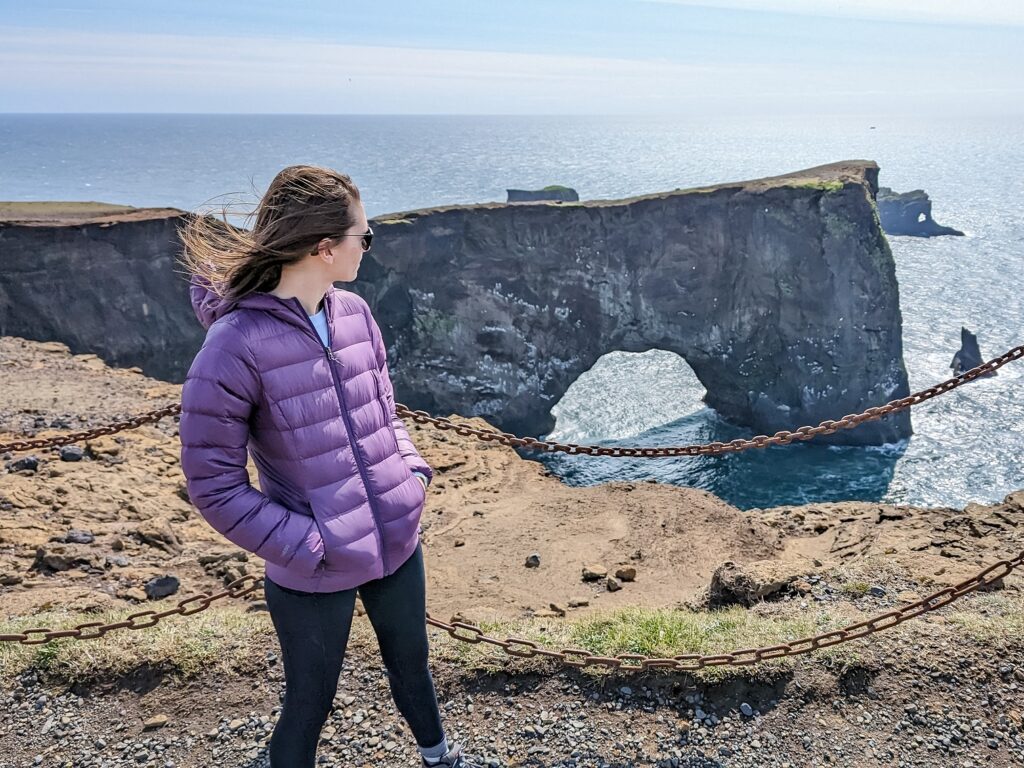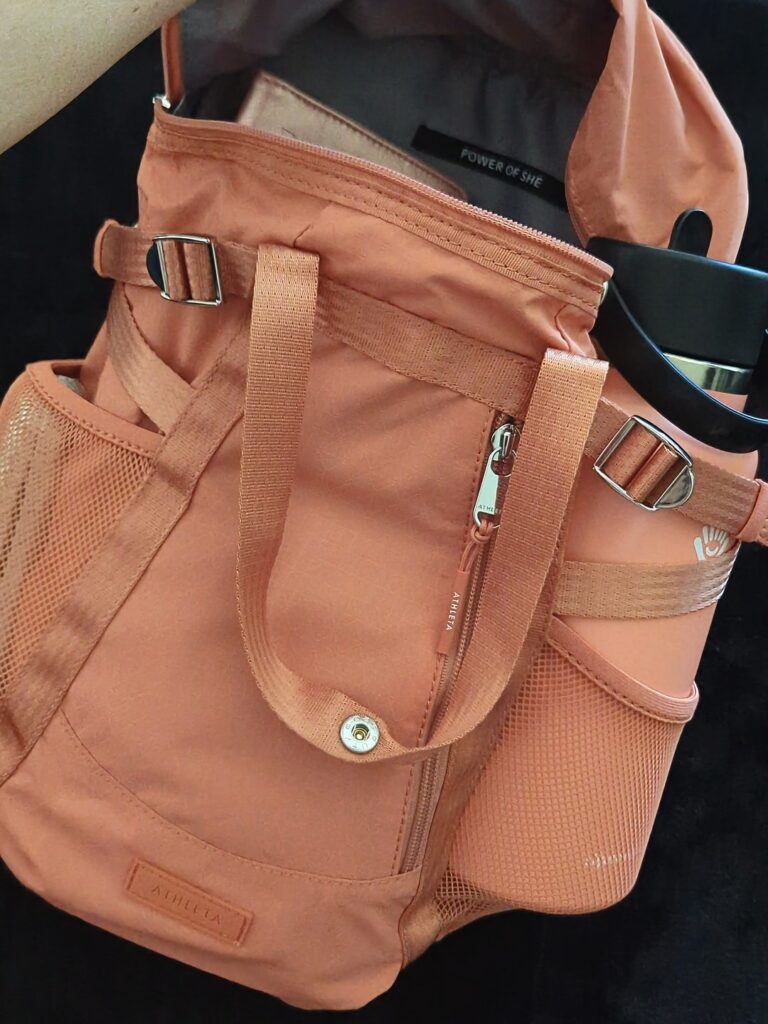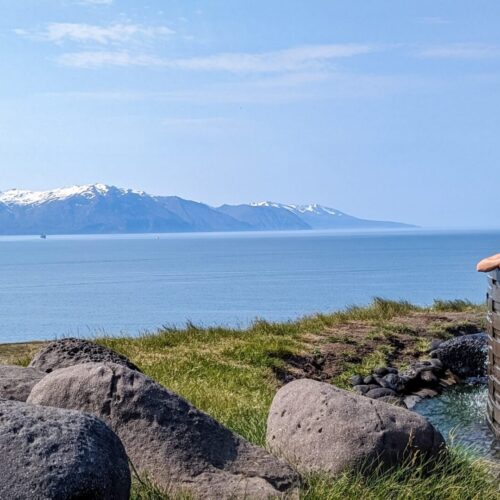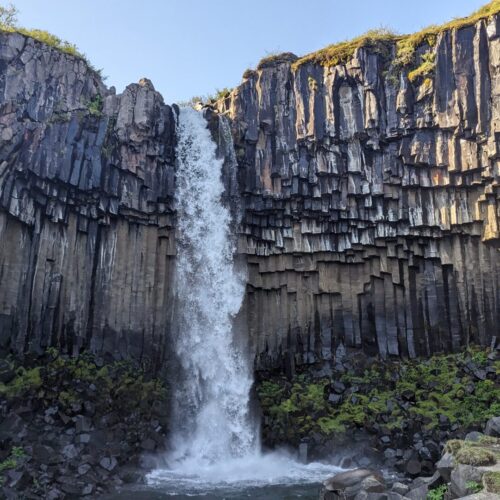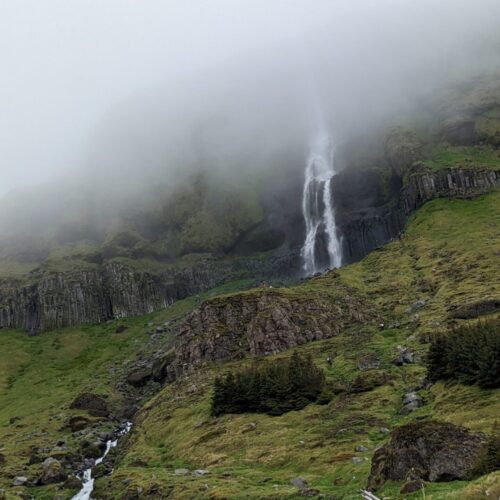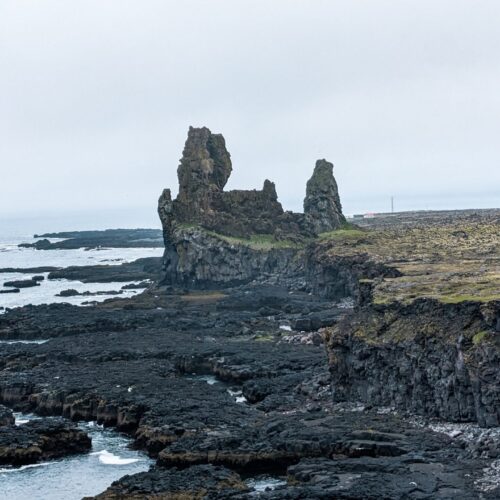If you are anything like me, you may be nervous about what you must pack for an Iceland trip. What do you need to pack to feel prepared? What can you leave behind? I’ve spent a lot of time researching what is needed and then putting it to the test on my trip. Now I am here to share my Iceland Summer Packing Guide with you!
Most Important Thing to Pack
I’m a desert girl, and we don’t often need cold weather or rain gear, so you are likely already starting steps ahead of me! A rainy summer Alaska trip showed me quickly how unprepared I was to deal with ten days in Iceland. Thank goodness for that trip because I didn’t make the same mistake a second time, which makes me feel comfortable enough to share this guide.
I will get into more detail below, but I want to hit the most important bit right away!
The three most important things to pack:
- Waterproof Jacket
- Waterproof Pants
- Waterproof Shoes
Do you notice a theme? Waterproof! Weather in Iceland can change for the worse quickly. Chances are you will have rain multiple times. You want to be prepared because 95% of your time in Iceland is outside and you can’t just wait out the rain; you must be prepared for it!
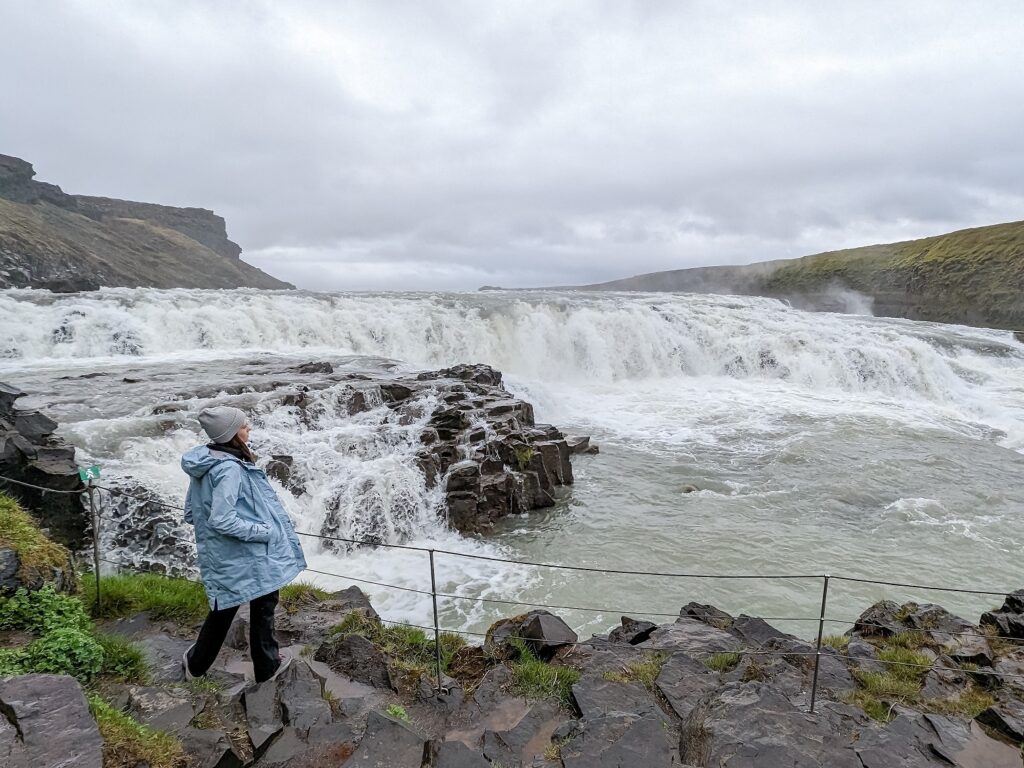
Going into my Iceland trip, I took all the warnings about being prepared for the rain to heart and ensured my husband and I had the three waterproof items above. Deep down, I was a little skeptical about really needing the extra gear. Don’t be skeptical. You will need it. If you don’t have it, buy it! I promise it is worth the expense and peace of mind to ensure you have a spectacular trip to Iceland.
Now let’s get to the guide!
Packing for Iceland in the Summer
The average temperature in Iceland in June ranges from 42°F (5.5°C) to 55°F (12.8°C). Now add in rain and wind. It may not be freezing temperatures, but you will still likely have cold days.
The key to surviving Iceland is layers! This is true of any cold or weather-volatile destination. You will see the same advice in my Alaska Cruise packing guide.
Consider specific fabrics as well when buying or packing for Iceland. Merino wool is thin but very warm and moisture-wicking. It’s the perfect material to build up base layers. Also, consider items lined with fleece, as they make cozy and warm base layers.
Avoid jeans for most outdoor situations; they get heavy when wet and dry VERY slowly.
Base Layers
Shirts/Thermals
You have many options for your first layer; what you choose is going to depend on the day and how warm it will be.
Merino wool thermal shirts are the most common choice for your first shirt layer. They will keep you warm but, at the same time, keep you from overheating. While merino wool is cheaper than other wool options, it still can add up quickly. Feel free to add your usual long sleeve shirts or even some short sleeves so that you aren’t relying only on Merino wool.
Don’t skip out on a couple of short sleeve shirts. We had a few surprisingly warm days and were very happy to have them.
Some Items Used on Our Trip:
Long Sleeve Crew Neck
Ribbed Crew Long-Sleeve Shirt
Fleece Lined Base Layer Set
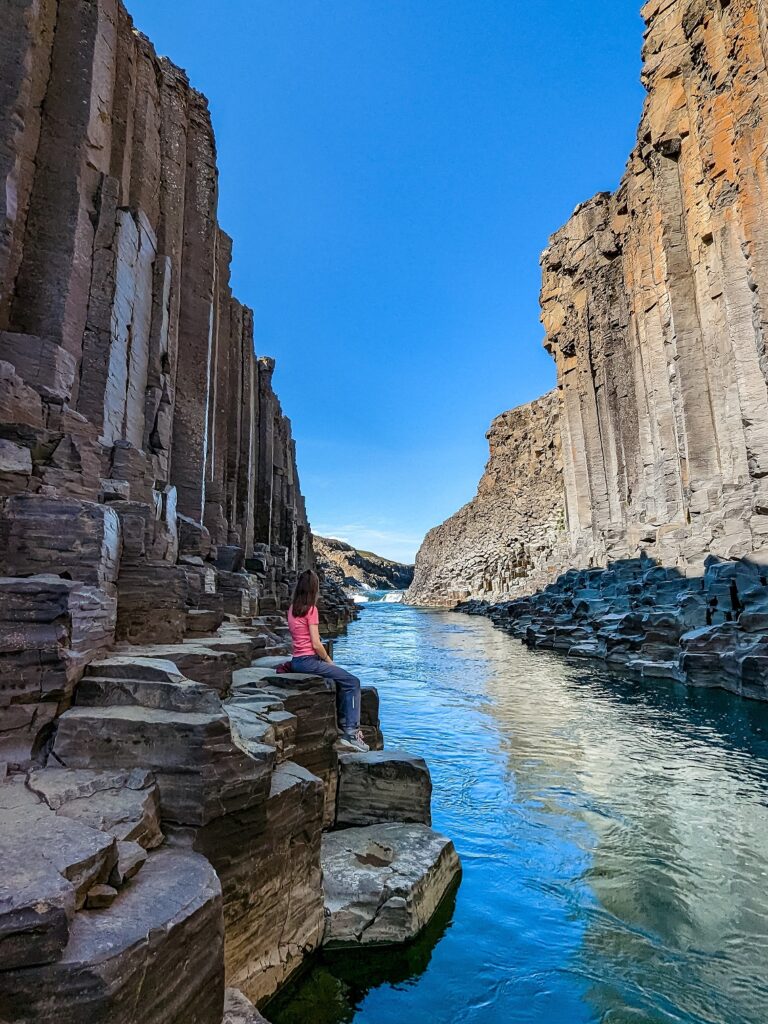
Leggings/Long Johns
I swear by fleece-lined leggings. This is me telling you to buy fleece-lined leggings or long johns; I promise you will thank me later; they are so comfortable.
They aren’t too warm, but they are soft and will provide you with a little bit of additional warmth that you may want while trekking across Iceland. Plus, you can strip down to your base layer for comfort while driving through the country.
If you are someone that doesn’t get cold enough to warrant fleece-lined bottoms. Consider some regular leggings or long johns for your base layer. Depending on how warm your travels get, you may not need this layer every day, but it’s good to have as the need will likely arise.
I wore a set of leggings every day, and on a few warm days, I only wore the leggings without any additional layers.
Some Items Used on Our Trip:
Winter Trail Leggings
Baleaf Fleece Lined Leggings
Fleece Lined Base Layer Set
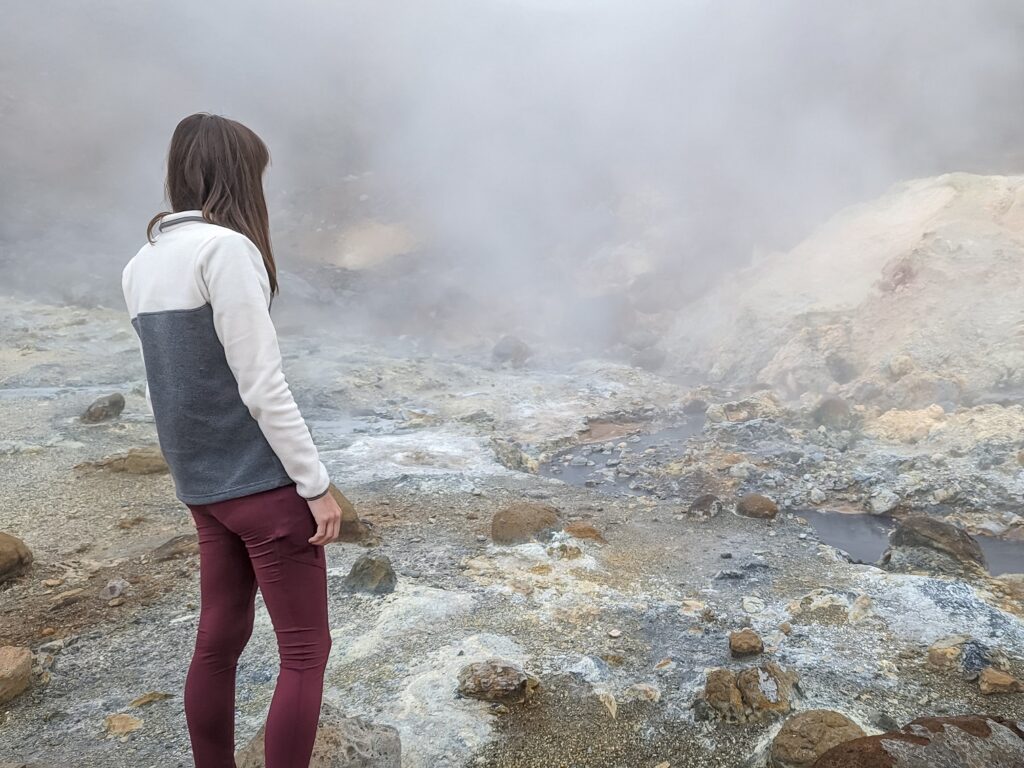
Socks
I’m going to once again suggest merino wool for your socks. They are moisture-wicking, odor resistant, and will keep your toes temperature appropriate! Make sure you are packing at least crew or quarter crew socks for most days. There is no use for low-ankle socks on this trip. Keep your feet and ankles happy.
Please consider bringing extra socks. I firmly believe in having extra socks for every trip but don’t skip out on them in Iceland. Wet days can mean wet socks.
Some Items Used on Our Trip:
Bombas Merino Wool Hiking Socks
Bombas Hiking Socks
Feideer Socks
Danish Endurance Merino Wool Socks
Middle & Top Layers
The number of layers you choose to wear will depend on the weather and how cold you get.
Realistically your top layer should be your rain gear. You may always wear that gear or have it handy if the weather worsens. A variety of items can be worn between your base layer and the topmost rain shell.
Pullover/Hoodie
You tend to be warmer overall if your core is warm, which is why I suggest extra layers for your top. You can always quickly shed them, so it shouldn’t be an issue.
Having a basic pullover or hoodie that can add a little more warmth to your base layer is a huge plus. This can be anything as long as you find it comfortable.
I personally shy away from hoodies as I expect my jacket or rain layer will have a hood; it gets bulky with too many hoods. Instead, I prefer to have a fleece pullover or zip-up.
Again, this is a “whatever makes you happy layer,” but don’t skip out on having this as an option because layering is essential! If you are packing light, a single item for this layer will suffice.
It’s also a great option to have when you are just relaxing in a hotel or while driving.
Some Items Used on Our Trip:
Columbia Benton Springs Pullover
Radiator Fleece 2.0 Snap Mock
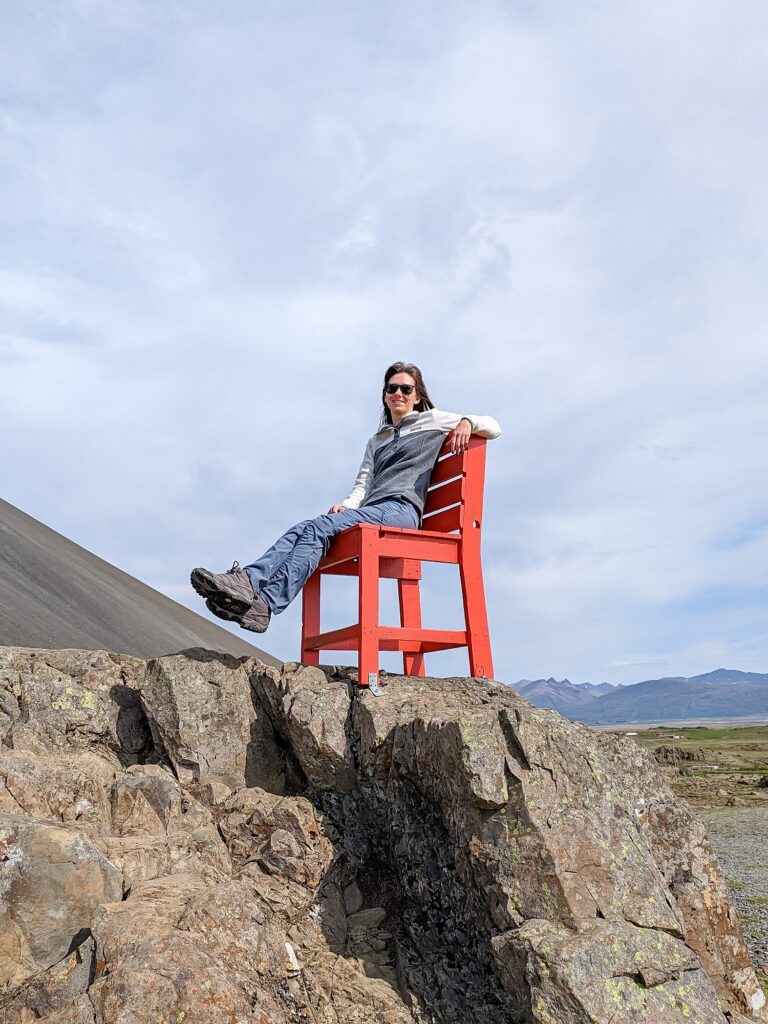
Parka/Puffer
You have a lot of choices when it comes to a jacket. You could make your life easy and get a 3-in-1 jacket that covers everything, including waterproof. Or, you can pick out a parka or puffer based on your particular style preference.
I personally went the route of a puffer because I find it easier to pack over a heavy jacket or parka.
You do have a ton of options though, Eddie Bauer, Columbia, Patagonia, REI, and many more. All of them offer so many jacket options you are bound to find something you love. Also, check on Amazon if you need to try and find a cheaper option.
If you plan to take a lot of pictures featuring yourself, pick a colorful jacket that will really POP against the natural landscape. Yellow, red, purple, and blue all create a beautiful contrast to the natural environment.
Remember, many down-style puffers appear as if they would be waterproof, but they aren’t. They are usually water resistant at best and can get heavy and become slow to dry if they get too wet.
You likely only need one jacket of this style, don’t be like me and bring four.
Some Items Used on Our Trip:
Cirruslite Down Jacket
IgniteLite Stretch Reversible Jacket
Wind/Water Resistant Pants
You are going to want to put something over the base layer on your legs. Most people would go for jeans usually; please don’t. Jeans get wet, and they get heavy. They also don’t dry very fast. Instead, look for pants that are made for hiking and outdoors; they often will be wind and/or water-resistant. Water resistance isn’t a huge must if you have a rain shell to go over them, but it’s still nice to have, especially near waterfalls.
Consider different options, such as regular lightweight, quick dry hiking pants or fleece-lined water-resistant pants. Similar to jackets, there are many options which will help you find something you love.
Don’t think you must limit yourself to clothes for your gender if they don’t work for you. Buy whatever you like as long as it’s comfortable and functional. My husband wore women’s hiking pants because the sizing was better for him.
Realistically you only need one or two pairs of pants because you are probably wearing them over a base layer, but don’t shy away from extras if you have the space!
If you want to bring jeans, have one pair if you plan to visit restaurants or downtown. Any situation where you don’t risk getting wet is okay
Some Items Used on Our Trip:
Polar Fleece-Lined Pants
Baleaf Hiking Pants
Rain Layers
You may not need dedicated rain layers if your main layers are a waterproof jacket and pants. However, finding waterproof shells is often much easier and cheaper than waterproof jackets and pants.
For the most part, you will want to go function over form with this layer. Your goal is to keep dry. Put on your layers and spray yourself with a hose if you have to; just make sure you stay dry! You might think that’s extreme, but on our first day, we had sideways rain in the Golden Circle. Thanks to our waterproof layers, we were dry other than the rain pelting our faces.
In terms of a jacket, you can go the full rain jacket route, or you can also go the route of a light shell. Again, options are abundant; feel free to pick whatever is your favorite!
I personally picked a full rain jacket that I could swap with my puffer jacket when necessary. My husband wore a more traditional rain shell over his puffer.
Some Items Used on Our Trip:
Columbia Storm Surge Rain Pants
Cloud Cap Stretch Rain Pants
Charly Parka
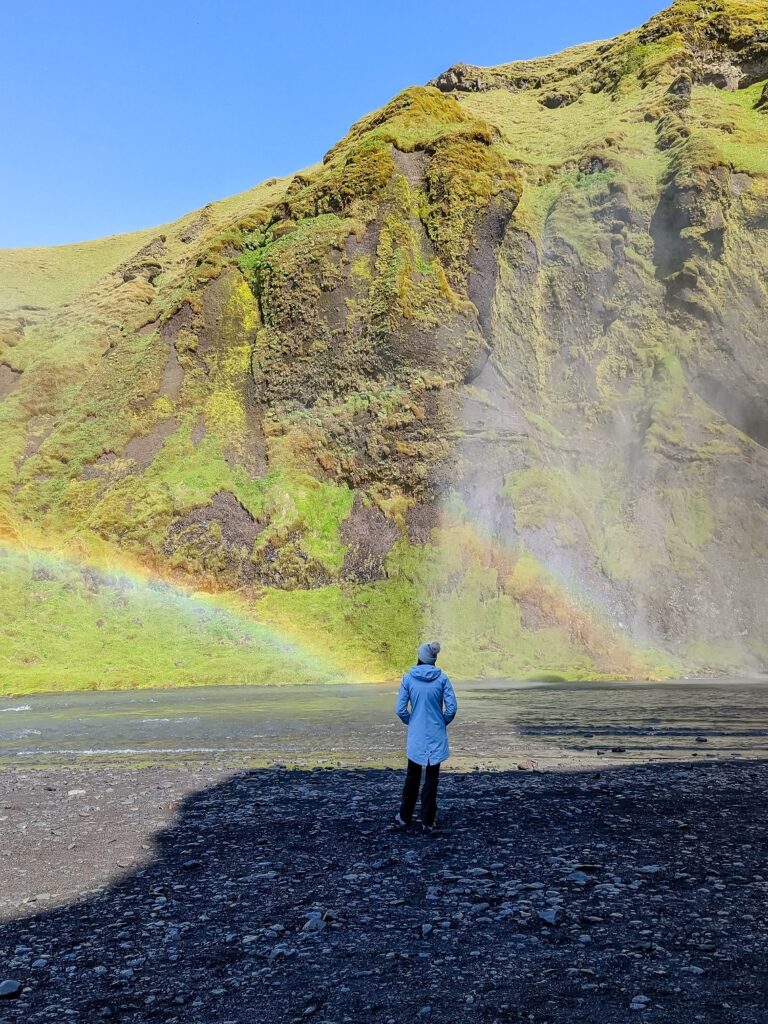
Shoes & Accessories
Hiking Boots
These are a necessity. Please make sure they are waterproof.
You are going to be wearing them all day, every day. Make sure they are comfortable. Bring two different pairs if necessary to keep your feet happy.
There is a lot of choice when it comes to hiking boots; the ones we have are just a few of the available options. Take a trip to a local sporting goods store to try different options to find a pair that works for you, assuming you don’t already have a favorite!
Some Items Used on Our Trip:
Women’s Columbia Newton Ridge Waterproof Hiking Boots
Men’s Columbia Newton Ridge Waterproof Hiking Boots
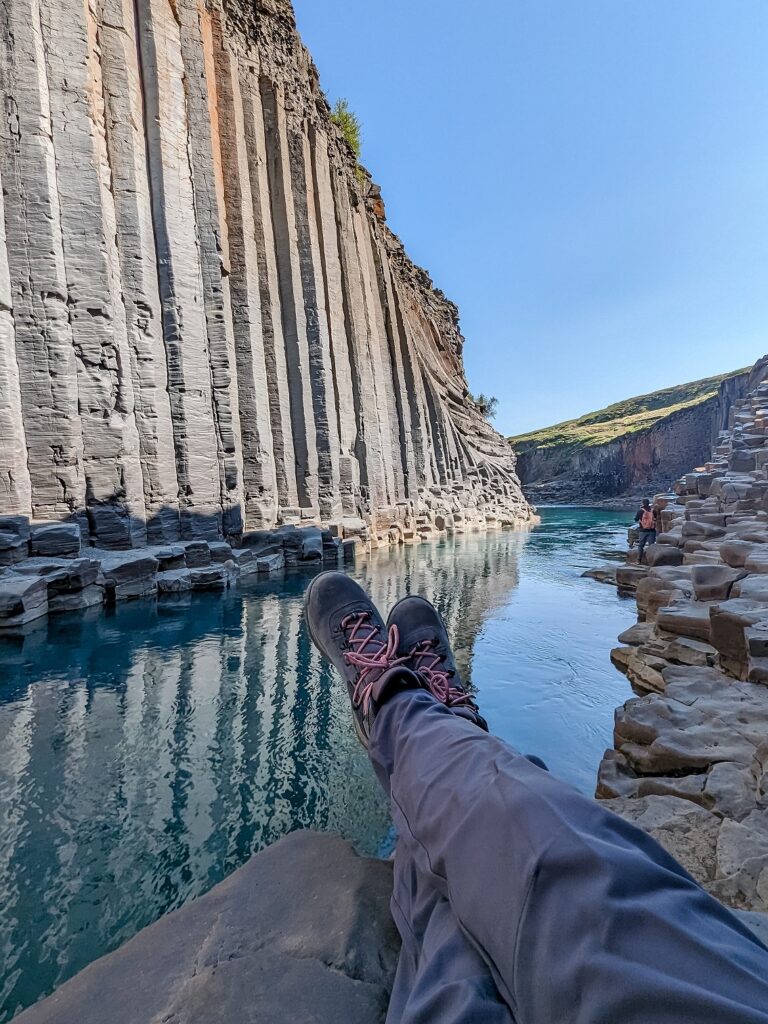
Other Shoes
You will be wearing your hiking boots most of the trip; however, you may want to consider a couple of other pairs of shoes.
Flip-flops will come in handy if you stop at any geothermal baths or pools around the country. We often changed out of our boots in the car and swapped to flip-flops before even heading into the baths; it made things a lot easier.
Consider a pair of regular sneakers for any day you are flying or aren’t doing intense sightseeing. This is mainly an option for comfort and isn’t completely necessary, especially if you are trying to pack light.
Swimming Suit
There are so many opportunities in Iceland to visit hot springs and geothermal baths/pools. Don’t pass up these opportunities; they are such a great experience. Make sure you pack a swimsuit or two so that you can soak in the warm water!
Like jackets, consider picking something fun and colorful to stand out against the natural backdrop.
I brought this swimsuit.
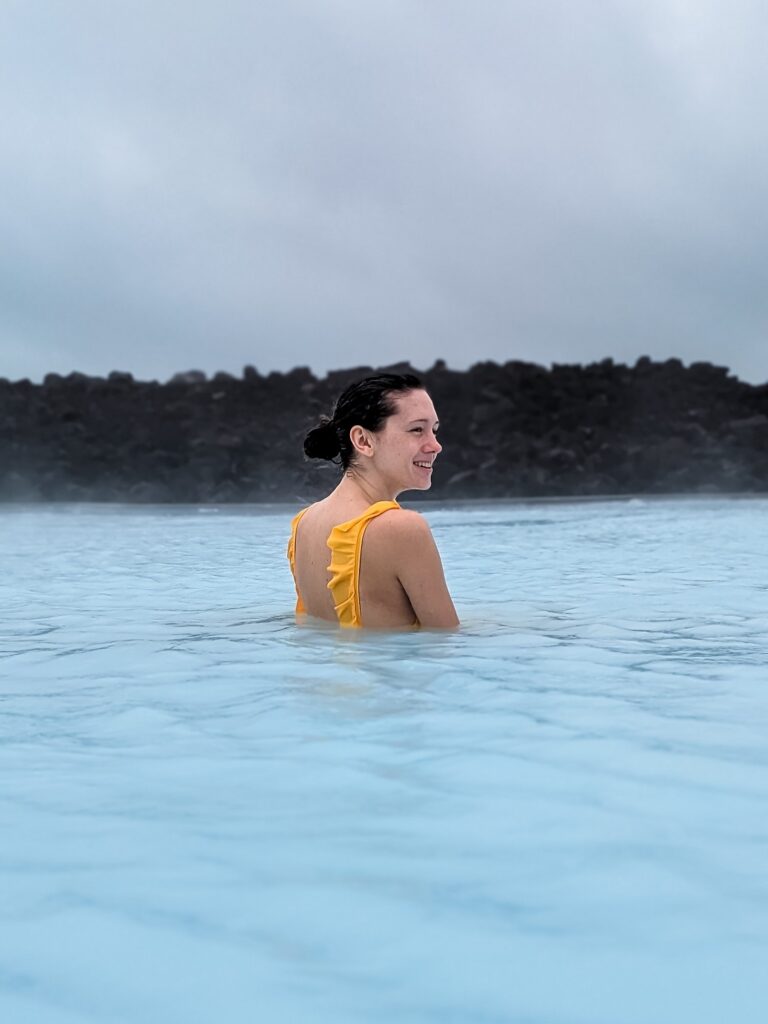
Hat/Beanie/Headband
Something to keep your head and ears warm is a must! You may not need it every day, but chances are it will be windy or cold enough to want something.
Consider a wide-brim hiking hat if it’s sunny or you intend to use a bug net.
Some Items Used on Our Trip:
Columbia Hat
Women’s Sun Hat
Columbia Pom Pom Beanie
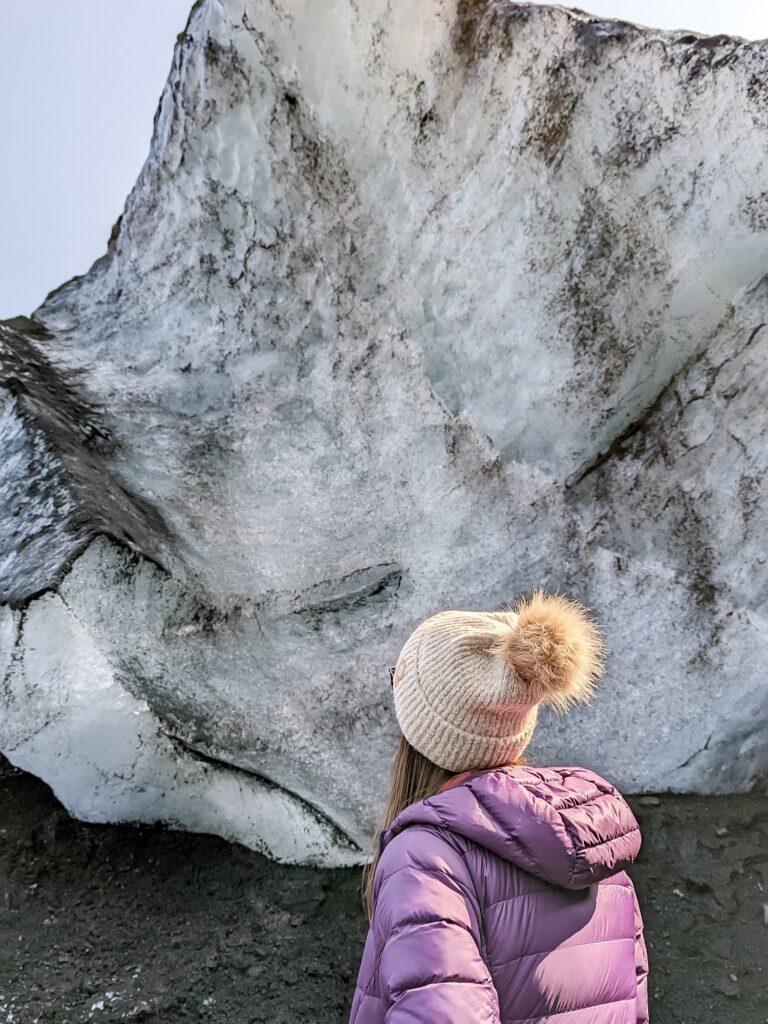
Other Useful Items to Pack
Backpack
A small backpack for use during the day while hiking and adventuring. You will want somewhere to keep your water bottles, snacks, a portable charger, cameras, etc.
Pick something that is somewhat waterproof, just in case!
I used this Athleta backpack.
Plug Adapter/Converter
This may not be necessary depending on where you currently live but double-check that you have any necessary adapters or converters so that you can use and charge your devices. You likely will only need an adapter unless you use a hair styling tool, in which case you may need a converter.
We used two of these adapters, and they worked out great. (Other than me leaving one behind, oops!)
Water Bottle
Water in Iceland is easy to come by, you can drink straight from the tap, and it tastes great! Don’t bother buying water; bring a reusable bottle and fill it up during the day.
I used this 32oz Hydro Flask.
Mosquito Head Net
This is a niche item, but if you plan to visit the Myvatn area, pick up a bug net to wear over your head.
There are so many midges near the lake, and they will drive you crazy. They are relentless and will follow you around. Do yourself a favor and pack this if you are going there; it’s small and only takes up a little space. We wore these while in the Myvatn area and were still annoyed with the bugs; I couldn’t imagine not wearing one.
We used these!
Waterproof Bag
If you intend on visiting hot springs and pools, it’s good to have a bag to toss your swimsuit in after you are done. Keeping the wet swimsuit away from your clothes until you can hang it up is a must.
I brought two of these bags, which were the perfect size for our hot spring gear.
Lotion/Sunscreen/Lip Balm
The wind and hot spring water will do a number on your skin. Make sure you have good options to moisturize!
Remember to also use sunscreen; it may not seem necessary, but burning is still possible! Nivea Super Water Gel is my go-to sunscreen.
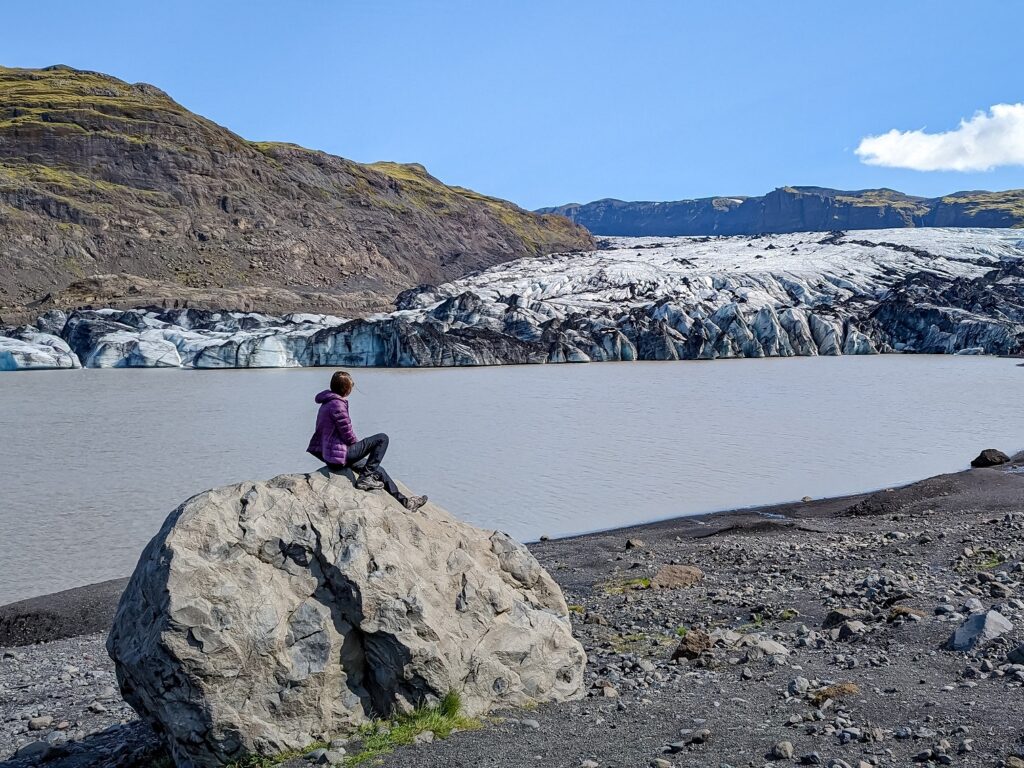
Waterproof Phone Case
A waterproof phone case is great for taking photos at a hot spring. Not a necessity though.
It can also come in handy for super rainy days or near waterfalls.
Quick Dry Travel Towel
I consider this a necessity. Don’t question it; get one or even two for your trip. We got so much use out of these we wished we had another set of them.
We used them to wipe down our rain gear after getting in the car, to sit on the car seat to keep them from getting soaked, and at any geothermal bath l that didn’t provide towels. They are incredibly useful.
We purchased these.
Cigarette Lighter Charger
If you are driving around Iceland in a rental car, this is a great addition to give you more charging options.
We used this along with the two USB ports already in our car. It really helped to make sure everything was charged at all times.
Travel First Aid Kit
Given that you are often away from towns for long periods during your drive around Iceland, it’s good to have a basic first aid kit with you, just in case. We never used ours, but I was happy to have it, and it only took up a little space.
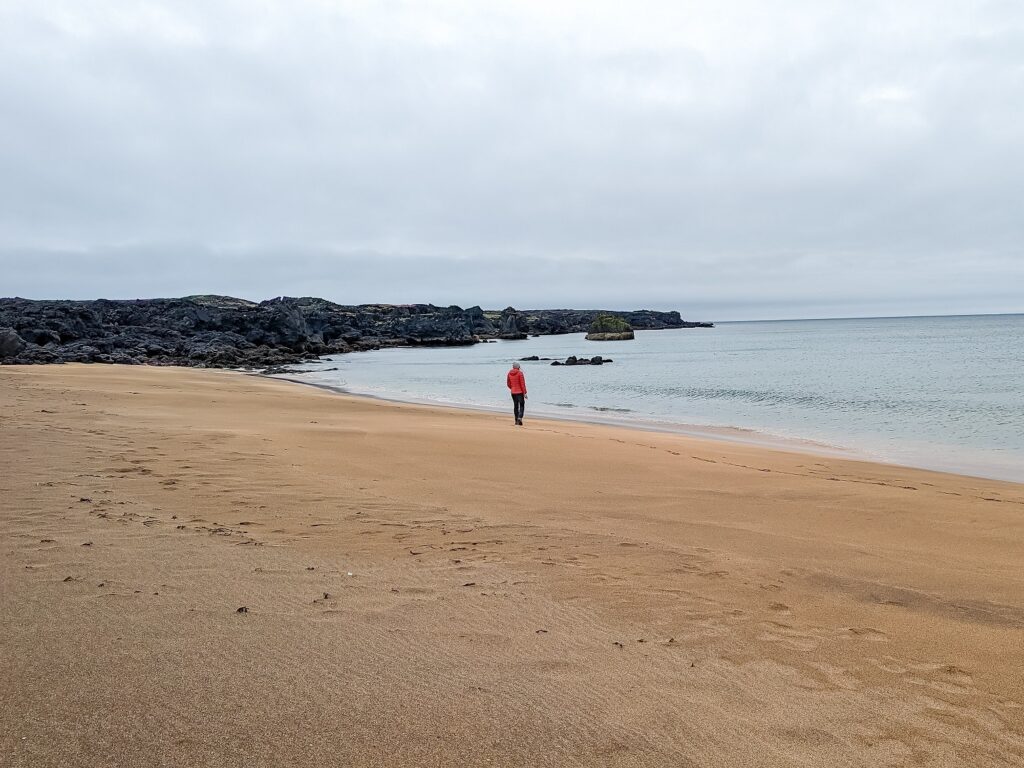
Final Advice
If you get nothing from this guide other than the fact that you NEED waterproof pants, a waterproof jacket, and waterproof hiking boots, then I will be happy. They are honestly the most important items for your trip. Anything beyond that is open to your preference and individual needs.
Also, don’t forget about layering. As long as you have laying options, you can’t go wrong with what you pack. Layering completely saved us on our trip as we could go from bundled up to ready for 75 degrees in minutes. The weather can change quickly, especially when driving between locations; you may start your day in three layers and end the day in short sleeves, give yourself that option.
It was evident on this trip that you can easily get away with minimal packing; hiking boots are the hardest to pack. You can re-wear so many items while traveling Iceland, and if I were to do it again, I would pack way less based on what I know now. It’s always nice to be overprepared, but it’s not nice to lug the same large suitcase in and out of accommodation everything single night and morning.
Again, my best advice is to be prepared for rain and wind, and you will be prepared for anything Iceland throws at you!
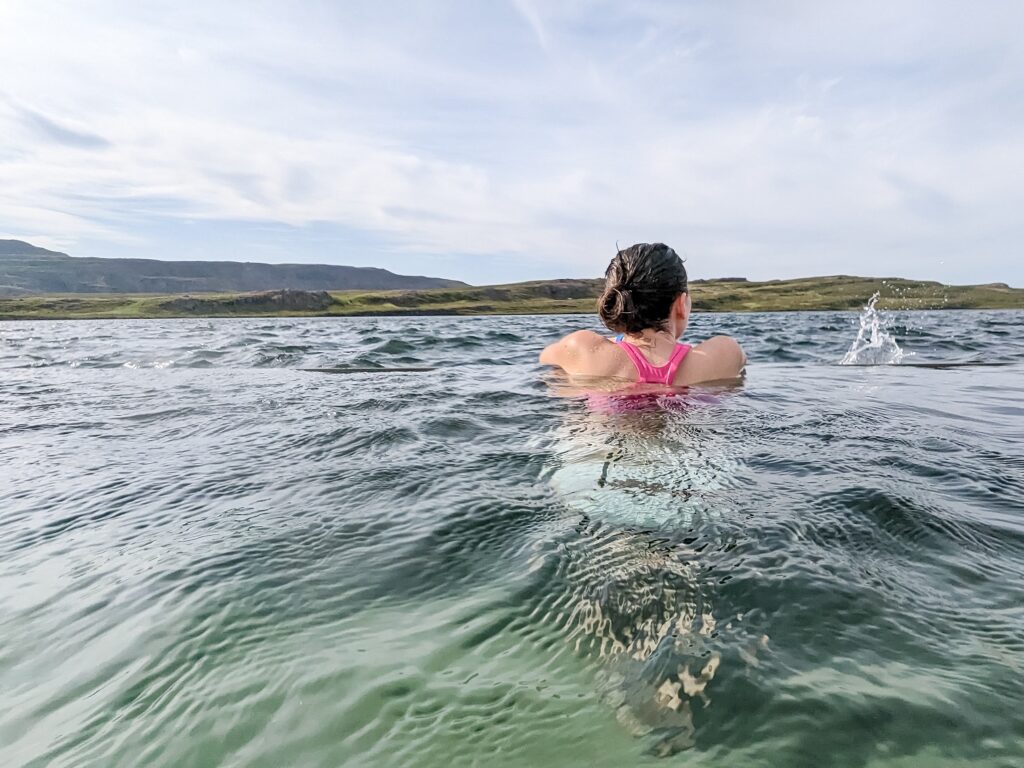
Don’t Forget to Check Out My Tips for Traveling Iceland
Tips for Traveling Iceland

